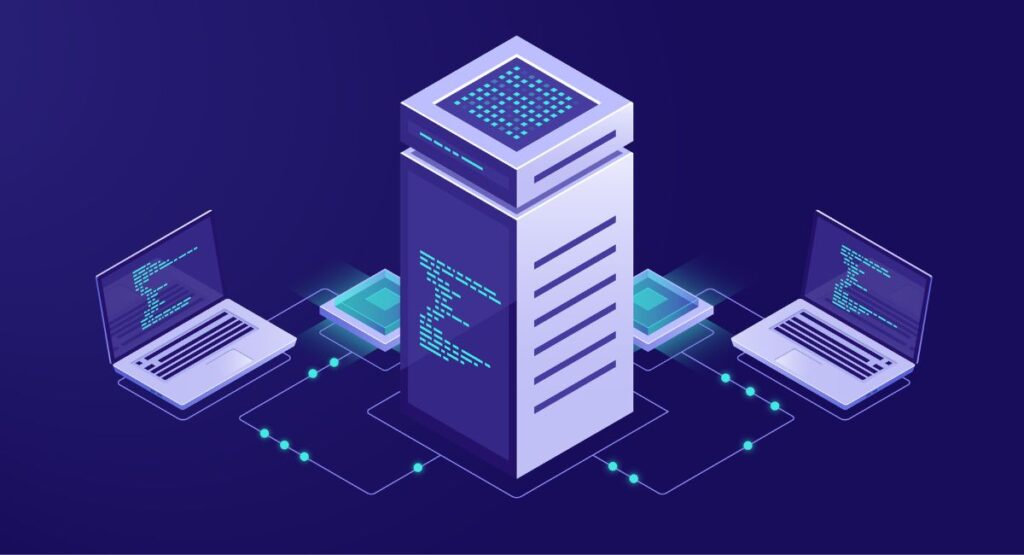10 Essential Modern Tech Stacks for 2025 You Should Know

Key Highlights
- Understanding modern tech stacks is essential for staying competitive in 2025.
- Cloud computing optimizes resource efficiency and scalability.
- Containerization ensures consistent application performance across environments.
- Serverless architectures reduce infrastructure management overhead.
- AI and machine learning frameworks enable advanced data analysis and automation.
- Blockchain technology improves data security and transparency.
- IoT integration supports real-time data collection and smarter operations.
- DevOps tools streamline development, deployment, and monitoring processes.
- Strong integration strategies are key to addressing compatibility and ensuring future readiness.
Introduction
Choosing the right tech stack isn’t just a technical decision—it’s a strategic move that can define the success of your digital product. In today’s fast-paced development landscape, tech stacks serve as the backbone of web applications, directly impacting performance, scalability, and user experience. As businesses push for growth, selecting the right combination of tools becomes crucial to staying competitive.
Modern tech stacks are more powerful than ever. Packed with feature-rich libraries, cloud-native capabilities, and open-source innovations, they empower teams to build smarter, faster, and more efficiently. With the right mix of programming languages and frameworks, businesses can future-proof their applications, ensuring they’re ready to meet the demands of 2025 and beyond.
What Is a Modern Tech Stack?
A modern tech stack refers to a combination of technologies, like programming languages, frameworks, libraries, cloud platforms, and tools, used to build and run web and mobile applications efficiently.
Essential Modern Tech Stacks for 2025 You Should Know
A range of important tech stacks is coming for 2025, designed to fit different business needs. Cloud computing platforms like Google Cloud Platform and AWS help provide scalable solutions. Containerization technologies, such as Docker, support solid microservices architectures. This makes the development process easier.
Serverless architectures use tools like AWS Lambda for better resource management while reducing technical debt. At the same time, AI and machine learning frameworks improve applications with strong data analysis skills. This helps businesses stay competitive in fast-changing environments.
1. Cloud Computing Platforms
Cloud computing platforms have changed the way we develop software. They allow fast web app deployment and the ability to scale easily.
With options like Google Cloud and AWS, developers can use many libraries and resources. This helps them build different applications without worrying about physical hardware.
The flexibility of cloud environments supports several programming languages. This creates a modern tech stack that can meet business needs. These platforms also include advanced features like auto-scaling, which helps use resources better. This improves performance and lowers technical debt.
2. Containerization Technologies
Containerization technologies have changed software development. They let developers package their applications with everything they need into separate environments. This means they can run the same way on a developer’s computer or in production.
Tools like Docker make it easy to set up and grow applications using a microservices architecture. This helps boost performance. Teams can work together better through this technology, leading to a smoother development process and less technical debt.
Using containerization leads to more productivity and supports faster application development.
3. Serverless Architectures
These systems are efficient and easy to grow. They remove the need to manage servers. This lets developers focus on writing code and improving the user experience.
With tools like AWS Lambda and Google Cloud Functions, businesses can launch applications without worrying about the background infrastructure. This setup works well with a microservices architecture, which helps to create and maintain web applications easily. Because of its flexibility, developers can manage resources smoothly. They can achieve high performance while lowering technical debt and operational costs in the software development process.
4. AI and Machine Learning Frameworks
AI and machine learning frameworks are very important for building smart applications. These applications can imitate how humans make decisions. These frameworks use large libraries.
This helps in speeding up development while meeting complex business needs. Tools like TensorFlow and PyTorch enable developers to build advanced models in various programming languages. This helps with different use cases.
By using advanced algorithms, businesses can improve their data management skills. This leads to valuable insights that support growth. Adding these frameworks to the software stack can greatly boost user experience. It can also streamline workflows in many areas.
5. Blockchain Technology
Decentralization and security are key parts of blockchain technology. This makes it a great option for many uses. Blockchain helps create unchangeable records. This means it is easy to see what happens in transactions. This is very important for fields like finance and supply chain management. Smart contracts help make the development process easier. They create automatic workflows that lower technical debt.
Different programming languages can be used with well-known blockchain platforms. This allows companies to create solutions based on their business needs. They can also get community support for ongoing improvement.
6. Internet of Things (IoT) Platforms
Today, Internet of Things (IoT) platforms are key for connecting devices easily. They support different programming languages and frameworks, which help in quickly creating web applications and mobile applications.
Popular options like Google Cloud IoT and AWS IoT offer a lot of tools and libraries for good data management. These platforms also enhance user experience by providing interactive user interfaces. This empowers businesses to use data from many connected devices. As a result, they create new solutions and boost their overall operational efficiency.
7. DevOps Tools
Collaboration between development and operations teams is very important for smooth software development. Good DevOps tools help make the development process easier. They automate workflows and improve communication.
Popular tools like Jenkins and Docker support continuous integration and deployment, which helps create a strong environment. These tools also work well with a microservices architecture. This means teams can use different programming languages and frameworks freely.
When organizations use DevOps practices, they can lower technical debt. This leads to better and faster web applications and mobile apps, which meet business needs and allow for growth.
8. Cybersecurity Solutions
Cybersecurity solutions are very important for protecting digital assets. They help keep sensitive data safe from unauthorized access. To do this, it is essential to use strong firewalls, encryption tools, and threat detection systems. These tools not only improve vulnerability but also make the user experience better. This builds trust in web applications and mobile apps.
As businesses use different programming languages and software, adding these security features into the development process helps reduce technical debt. This also supports a secure production environment.
9. Data Science and Analytics Stacks
Creative data science and analytics stacks are very important. They help organizations make smart choices using accurate insights. Using tools like Python and R with relational database management systems makes the data analysis better. These stacks often work with cloud computing platforms, like Google Cloud and AWS.
This allows for solutions that can grow and adapt to different business needs. Visualizing data through interactive user interfaces improves user experience. It helps teams understand complex datasets, which can lead to business growth.
10. Edge Computing Environments
Edge computing helps businesses work with data closer to where it’s created. This makes the user experience better and cuts down on delays. These setups save bandwidth by doing calculations near the data source. This way, web applications can respond quickly and work well.
With a microservices architecture, development teams can use different programming languages. They create strong solutions that fit specific business needs. As a part of a modern tech stack, edge computing supports high-performance applications. It also meets the rising need for real-time data processing in different industries.
Exploring the Impact of These Tech Stacks

Modern tech stacks are transforming how businesses operate. With tools like cloud computing and AI, teams can streamline workflows and focus more on innovation than maintenance. These technologies enhance efficiency, boost scalability, and reduce technical debt, helping businesses stay agile and competitive.
Smarter Development, Better UX
Today’s development frameworks and open-source tools make it easier to build fast, responsive apps with seamless user interfaces. Technologies like React Native and agile methods accelerate updates and feedback loops, resulting in better user experiences and higher engagement.
Business Evolution Through Technology
Cloud computing enables anytime-anywhere collaboration, while microservices and modern programming languages speed up deployment. Data management tools also allow for deeper user insights, driving smarter decisions and business growth.
Overcoming Integration Challenges
Integrating diverse technologies can be complex, often leading to delays or inefficiencies. Microservices, open-source tools, and robust community support can simplify integration and reduce resource waste.
Ensuring Compatibility Across Platforms
Tech stacks can create compatibility issues across languages, frameworks, and systems. Using containerization helps maintain consistency across environments, supporting smoother deployment and minimizing technical debt.
Best Practices for Modern Tech Stacks
Clear documentation, modular APIs, and collaborative open-source tools are essential for success. Taking an iterative approach to development ensures your stack evolves with your business, keeping you future-ready.
Future Trends in Tech Stack Modernization

As technology changes, it is important to pay attention to future trends in tech stack modernization. Developers and businesses need this insight. The rise of artificial intelligence and machine learning will lead to smarter applications. This will improve user experience and make the development process easier.
Also, using serverless architectures will focus more on efficiency and scalability. This will help teams reduce technical debt. Plus, using open-source solutions will become more common. It will give developers access to extensive libraries that support collaboration and innovation in the community.
Adoption of Emerging Technologies
- AI and machine learning are enabling smarter, more efficient applications.
- Serverless architectures promote scalability and reduce overhead.
- Open-source ecosystems are growing, offering shared tools and innovation.
- These trends ensure tech stacks remain current and community-driven.
Technologies to Watch
- AI improves application responsiveness and user personalization.
- Containerization tools like Kubernetes simplify deployment and scaling.
- Quantum computing promises faster data processing and advanced analytics.
- Staying current helps businesses maintain a future-ready tech environment.
Predictions for Tech Stack Evolution
- Focus will shift toward compatibility, flexibility, and community support.
- Increased use of microservices and cloud-native approaches.
- Serverless and cross-platform UIs will gain traction.
- Enhanced collaboration tools and open-source resources will become essential.
Choosing the Right Tech Stack for Your Needs

Selecting the right tech stack is a critical decision that directly impacts your application’s performance, scalability, and long-term success. Begin by clearly understanding your business objectives and the nature of the application you want to build.
Consider the desired user experience, required features, and the technical complexity of your product. Scalability and flexibility are equally important—your stack should support growth without introducing unnecessary technical debt.
It’s also essential to evaluate your development team’s expertise. Leveraging technologies they are already familiar with can streamline development, reduce onboarding time, and lead to more maintainable code. The goal is to build a tech foundation that supports a smooth development process and ensures a successful move into the production environment.
Assessing Business Requirements
Understanding your business requirements is the foundation of selecting the right tech stack. Identify what type of application you’re building—whether it’s a mobile app, web platform, or enterprise system—and outline its core functionalities. Prioritize performance and scalability, especially for backend components, to ensure the system can grow with user demand.
Collaborate closely with your development team to align on project goals and technical needs. Ensuring compatibility between business objectives and chosen technologies will reduce friction during development and lead to a more cohesive product. A clear focus on user experience and critical features helps mitigate risks and overcome development challenges more effectively.
Considering Scalability and Flexibility
In today’s dynamic digital environment, your tech stack must be built to scale. Choose technologies that support modular development, such as microservices architecture, which allows individual components to be scaled independently. This enhances both system performance and user experience.
Cloud platforms like AWS, Google Cloud, or Azure provide flexible infrastructure that adapts to changing workloads, ensuring cost-efficiency and reliability. A scalable and flexible tech stack allows your development team to respond quickly to evolving business needs without compromising stability or performance.
The Role of Community and Support Services

User communities and support services are very important for any modern tech stack. By connecting with other developers, you can learn about best practices. You can also tackle common challenges and find advanced features to improve your projects.
Joining forums, using online resources, and going to meetups helps boost your technical talent. It also creates a friendly space for sharing knowledge. These connections are key for solving problems, ensuring your projects can grow, and staying updated on the latest trends in software development and application management.
Leveraging Community Knowledge and Resources
Accessing community knowledge can greatly improve how well your tech stack works. Online forums, user groups, and open source projects give you helpful resources. These places allow tech professionals to share their experiences and solutions. B
y engaging with these communities, you can collaborate better and stay updated on the latest trends and best practices. This can help you reduce technical debt and streamline the development process.
In turn, this leads to innovative software projects and high-performing applications that meet changing business needs.
Accessing Professional Tech Stack Consultation Services
Engaging with tech stack consultation services can greatly improve your software project. These experts help you choose from many options. They make sure that the technologies you select match your business needs and growth goals.
By using industry knowledge and community support, consultants can help you pick the right tech stack for your web applications. This can include cloud computing or microservices architecture. Their help reduces technical debt and makes the development process easier. In the end, this will lead to high-performance solutions.
Conclusion
Navigating the world of modern tech stacks can really help you in your software development. Picking the right mix of programming languages and tools that fit your business needs is key for high performance and a good user experience.
As technology changes, keeping up with the latest trends and having community support is very important. It helps you handle challenges and follow best practices.
By using these tech stacks, you can grow your business and improve the development process. This leads to better web applications and mobile solutions that meet user expectations.
Frequently Asked Questions
Q: What are the key components of a modern tech stack?
Ans: It includes cloud platforms, programming languages, frameworks, databases, APIs, DevOps tools, and security systems.
Q: How do I choose the right tech stack for my project?
Ans: Analyze business goals, required features, team expertise, and future scalability needs.
Q: What are the benefits of tech stack modernization?
Ans: Improved efficiency, cost savings, faster innovation, better integration, and enhanced user experience.












